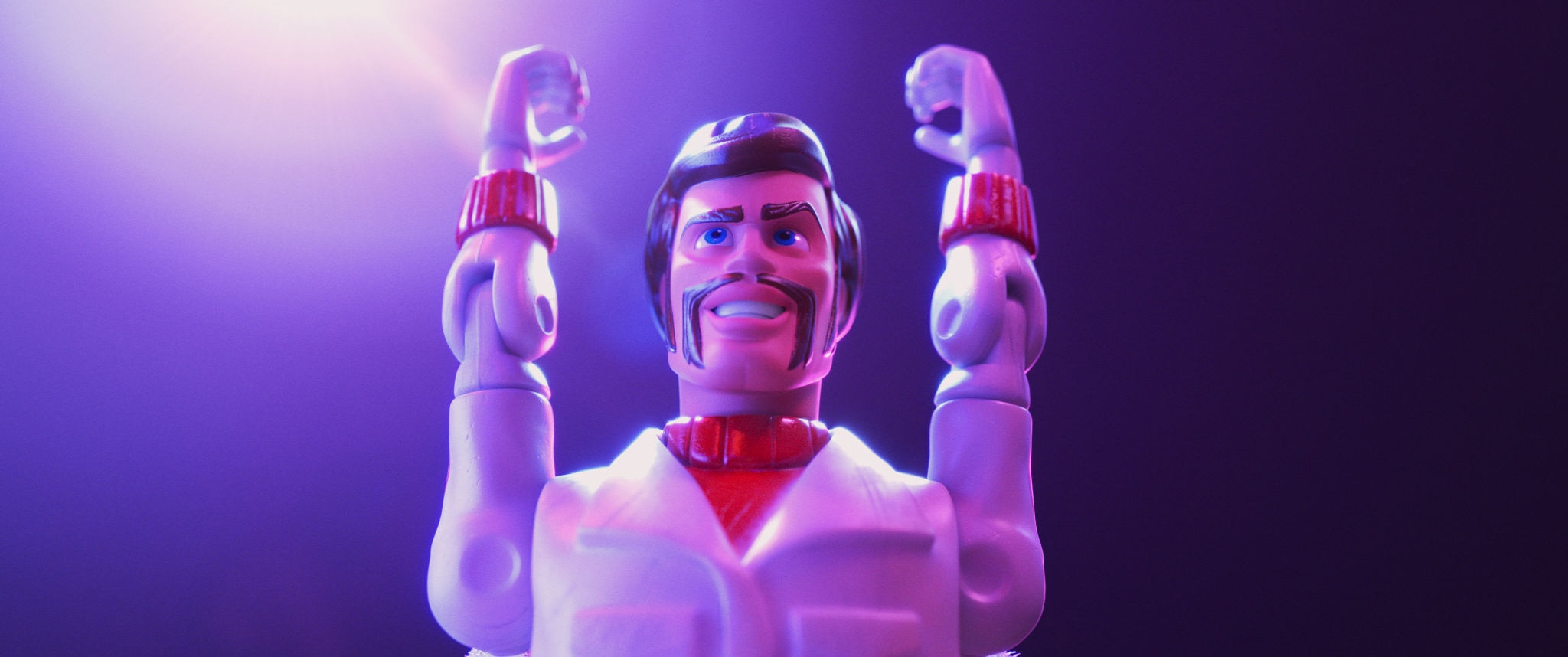Create a free profile to get unlimited access to exclusive videos, sweepstakes, and more!
Science Behind the Fiction: Why are the Toy Story toys so dang strong?

Pixar seemingly closed out its flagship series with 2010's Toy Story 3, so it was an unexpected surprise when it was announced we'd be getting another adventure with Woody, Buzz, and the gang in Toy Story 4.
The third installment closed out with Andy handing off his beloved toys to another child, Bonnie, before he left home for college. It was a beautiful and emotional ending to the story and left some of us wondering what else there was to say. Turns out, quite a bit.
**SPOILER WARNING: Spoilers for Toy Story 4 ahead.**
Toy Story 4 delivers all of the adventure and excitement of the previous installments but with an added sprinkling of existential crisis. We meet up with the toys in their new home. A new pecking order has been established in Bonnie's room, which leaves Woody cast aside and struggling to adapt to his new station in life. With Andy, he was in charge, marshaling the rest of the toys in order to ensure Andy's well-being. But here, with Bonnie, he's relegated to the closet with the rest of her forgotten playthings.
Woody's mid-life crisis in the midst of a family road trip (in part brought about by a spork-turned-toy named Forky) leads him and the gang on a high-flying adventure filled with new friends and foes and lost toys looking for purpose. The stakes are high and the obstacles even higher, requiring feats of strength both emotional and physical in order to succeed.
Woody is up to the task at every turn, hefting enough emotional weight to reduce a grown man to weeping and equally heavy physical ones. He carries a doll several times his size, one-handed, while he zip-lines over a carnival. He lifts an RC car while suspended from Slinky.
And Woody's not the only one.
These toys exhibit feats of strength more impressive than any Strong Man at the carnival. Which causes us to wonder: How exactly do they do it?
It turns out toys have a couple of advantages over humans and other animals.
NO MUSCLE FATIGUE
In animals, there are physical limits to the amount of work that can be done in a given time. When muscles do work, it upsets the internal equilibrium of the body. Work carried out by muscle cells generates force and that energy has to come from somewhere. Energy used exercising is energy taken from within the body. Eventually, you'll succumb to fatigue, probably sooner than later.
This all has to do with the way the body converts energy to power your muscles. You've likely experienced it. You begin to exercise and you start out strong, but with each passing second, each passing rep, you feel yourself getting weaker. But, why? You have the same muscles you did a moment ago, you should be able to do the same work, right? Well, not exactly. There are a lot of processes going on inside your body every time you do a bicep curl or a pushup.
Your muscle cells are using ATP to power the movement and that runs out pretty quickly. Thereafter, your body goes through a series of chemical reactions in order to keep providing your muscle cells with the energy they need. Pretty soon, your body can't keep up with the energy demands.
Woody and his pals don't have this concern. With bodies constructed of cotton and fabric or plastic, they have their own biological constraints to deal with (constraints we can't begin to understand. Like, how do they convert energy into movement at all?) but muscle fatigue isn't one of them. Once a toy initiates a movement, via whatever processes they use to accomplish that, they could feasibly keep it up indefinitely.
In fact, with plastic toys, it's practically a requirement. The rigidity of their form is such that Buzz, with his arms positioned up, could hold an object over his head until the end of time. Provided, of course, there was a child watching him all the while. Otherwise, he'd probably cast it aside dramatically. After all, he does nothing if not with style.
SMALL STATURE, BIG RELATIVE STRENGTH
The primary advantage toys have over humans is their size. In the first scene of the film, we see Woody haul RC out of the gutter with one arm. This is equivalent to a human being hauling a golf cart up a cliff face with one hand. Or is it?
It turns out, the smaller the creature, the larger their relative strength. This is the reason ants can famously lift many times their body weight. It's also the reason behind impressive feats of the world's strongest creature (relative to size), the dung beetle.
Onthophagus taurus (the dung beetle) has two types of males; one is fast and sneaky, the other is incredibly strong. The latter is capable of hefting weights more than 1,100 times that of their own bodies. And it all owes to their small stature.
The reason for the higher relative strength in smaller animals is due to the square-cube law.
In short, it states that as an object grows in size, its volume increases faster than its area. This is most easily demonstrated with cubes.
A cube with sides measure one centimeter has an area of one square centimeter and a volume of one cubic centimeter. If we double the length of its sides (so they are two centimeters long), you'll see the shift in ratio. This new cube has an area of four square centimeters, but a volume of eight cubic centimeters. Double the length again and you have an area of 16 square centimeters and a volume of 64 cubic centimeters. Pretty quickly, the disparity between area and volume becomes immense. This is important because muscle strength is determined by the cross section of that muscle or the area.
Simply put, a larger animal may have a higher volume of muscle tissue, but the cross-section can't keep up. As animals grow larger, a higher percentage of their strength is required just to keep their bodies moving. Small animals, however, have a closer area to volume ratio, meaning they can devote more of their strength to doing work.
It's also the reason King Kong, Godzilla, and gigantic killer ants could never actually exist. At a certain point, their bodies just couldn't support their own weight.
Considering Woody's smaller body size, his strength relative to his size would be increased as compared to a human-sized cowboy.
Watching him carry Gabby Gabby, lift the lid of the toy box, and heft objects far exceeding his size seems impressive — but that's just the way the physics of bodies works.
The size of Woody's heart, however, that's beyond the ability of science to explain.
Toy Story 4 is in theaters now. Bring the tissues.














